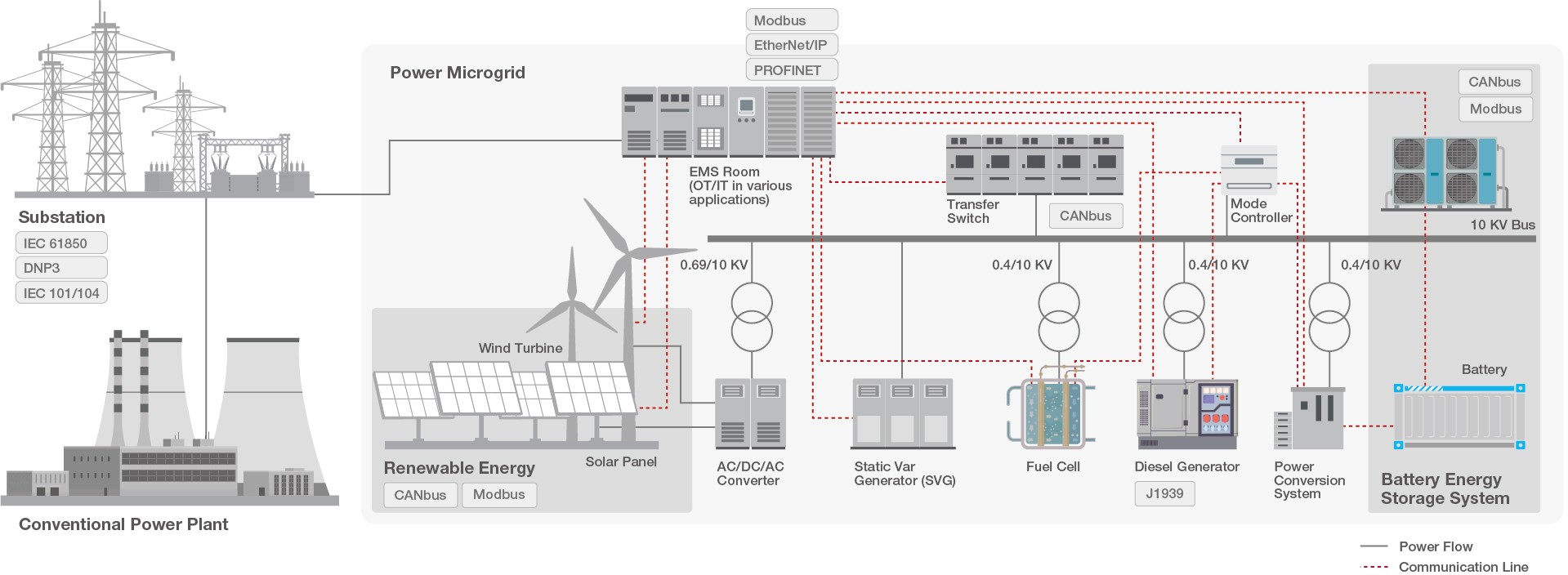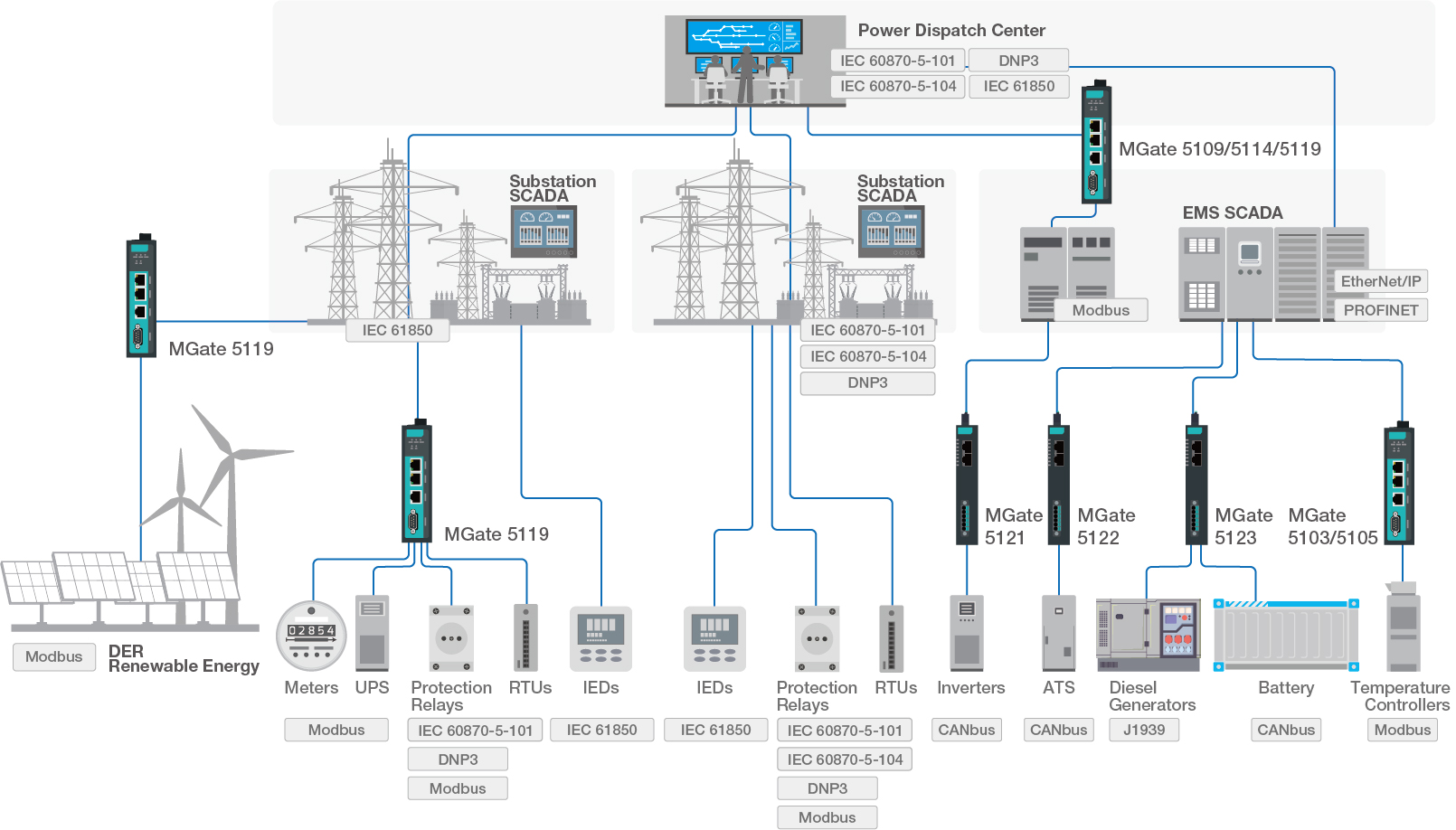In recent years, electrical power grids have joined the latest wave of digital transformation driven by the race for net zero carbon emissions, evolving from legacy utility networks into smart grids. This new energy network model aims to improve energy management by collecting and analyzing data in real time. However, ensuring the smooth operation of a smart grid is no simple task. To ensure the smooth operation of a smart grid, how can you enable timely data acquisition, analysis, and notifications among complex subsystems?
The Complexity of Smart Grids


A smart grid is a vast system comprising multiple subsystems, ranging from traditional power generation and renewable energy sources to digital substations, microgrids, energy storage systems, and end users. Each subsystem has its own characteristics and requirements; these subsystems include power distribution control, power monitoring, energy storage management, and more. The challenge arises from the diverse communication protocols used among these subsystems. For instance, feeder lines commonly use IEC 61850, DNP3, or IEC 101/104; meters rely on Modbus, renewable energy systems utilize CANbus, and backup power employs J1939. Unifying all this data poses a complex problem.
Challenges and Solutions
In this intricate scenario, effective protocol conversion and data integration become crucial. Usually, programmable logic controllers (PLCs) are used for this, but they require a lot of programming, which makes it more expensive and complicated. Another option is using industrial computers, but such a solution demands expertise in dealing with various communication protocols. The installation of diagnostics and troubleshooting tools on site is necessary to address any potential issues that may arise, even after the system has been running for some time. Furthermore, the complexity of network topology urges users to consider network security in harsh environments.
However, protocol gateways prove to the most effective solution. They facilitate protocol conversion through simple configuration, eliminating the need for complex programming. This means that even without extensive programming skills, one can easily achieve data integration and communication between different systems.
Remote Troubleshooting
In a smart grid, many devices are in remote locations. To reduce the time spent dispatching personnel for on-site issue resolution, remote access and troubleshooting are essential. Protocol gateways provide various built-in tools for troubleshooting, significantly reducing the time needed for fault diagnosis while also cutting the cost of external debugging tools.
The Importance of Security
Because remote connections to protocol gateways are possible, security becomes paramount. Protocol gateways need to provide secure connection features, including HTTPS connections, strict account and password management, and event log recordings. These features can mitigate potential risks of hacker attacks and ensure system security.
Reliability in Harsh Environments
Equipment in smart grids typically operates in harsh environments. Therefore, protocol gateways need to be designed for ruggedness. This includes resistance to wide temperature ranges and electromagnetic interference to ensure the overall reliability of the system.
Conclusion


In the era of smart grids, protocol gateways play a pivotal role in facilitating smooth data flow between different systems. Because of the myriad communication protocols used among all the various subsystems that make up the electrical grid, effective protocol conversion and seamless data communication are essential to fully realizing a smart grid. Protocol gateways allow for easy protocol conversion through simple configuration, remote troubleshooting, and system security. The application of this technology will contribute to achieving smarter and more efficient energy management, driving the development of smart grids and transforming the way electricity is delivered around the world.
Our fieldbus-to-Ethernet MGate gateways not only connect your serial devices to an Ethernet network, but also allow for multiple connections and can convert between various protocols. Use our selection table and MGate Product Page to find the MGate Series you need.
- Visit MGate 5121/5122/5123 Series product page to learn more about our latest Modbus TCP/EtherNet/IP/PROFINET-to-CANopen gateways